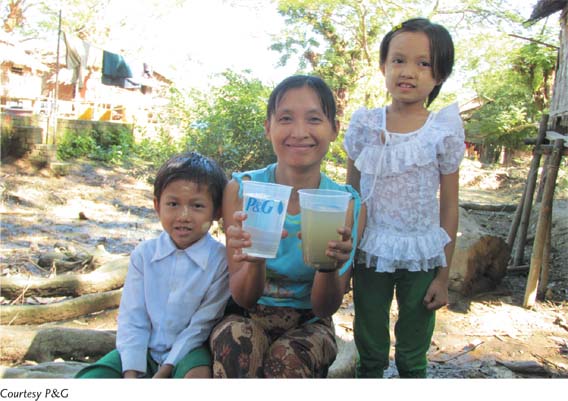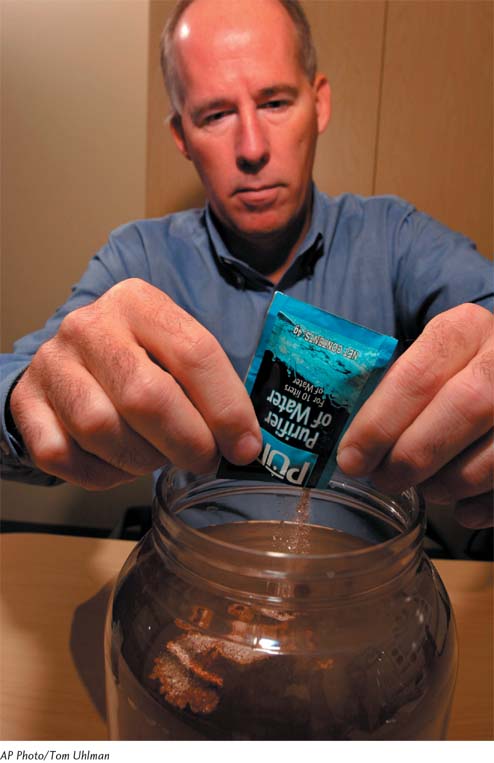working toward  sustainability
sustainability
Purifying Water for Pennies
As we discussed in this chapter, having access to clean drinking water is a worldwide problem. Nearly 1 billion people drink unsafe water that contains soil sediments, pesticides, heavy metals, and disease-
Nearly a decade ago, the Procter & Gamble Company teamed up with the Centers for Disease Control and Prevention to come up with a solution. Together they developed a powder with two components that purify water. The first component is known as a flocculant; it attaches to soil sediments, heavy metals, and pesticides that are in the water and forces them to settle out of the water. The second component is a chlorine compound that kills 99.99 percent of all harmful bacteria and viruses. The first step is to mix a small amount of the powder into 10 L of water and allow the flocculant to work for 5 minutes. Once the flocculant settles to the bottom, it is filtered out through a piece of cotton fabric. After an additional 20 minutes, the chlorine has killed bacteria and viruses. In short, for a small amount of effort, a person can create 10 L of safe drinking water in just 30 minutes.
Although Proctor & Gamble typically develops products designed to make a profit, this project was different. Purifying powder is needed in developing countries with populations that cannot afford to pay much even for something as essential as clean drinking water. Procter & Gamble decided to create a nonprofit organization, called the Children’s Safe Drinking Water Program, that would supply the powder to people in developing countries at no profit. They created small powder packets that could clean 10 L of contaminated water but were not much bigger than a fast-


As the water purification program became known around the world, Procter & Gamble realized that the product they created with no expectation for profit could be sold at a profit to wealthier people who need to purify water that they collect from streams and lakes when they go hiking and camping. In 2007, the company announced that it would begin selling the packets to consumers under the brand name PUR, for $2.50 each. This price yields a considerable profit, part of which supports the goals of the nonprofit program.
The Children’s Safe Drinking Water Program is an excellent example of new technologies that can be developed to be effective, inexpensive solutions to major environmental problems. It also demonstrates that such solutions can ultimately be profitable while providing a positive corporate image.
Critical Thinking Questions
Why is it important for a water-
purifying system to do more than just add chlorine to the water to kill harmful pathogens? How might a company benefit when it produces a product that purifies water at no profit?
References
Deutsch, C. H. 2007. Procter & Gamble to benefit in all but name from water purifier. New York Times, July 23.
P&G Children’s Safe Drinking Water. http:/
Water-